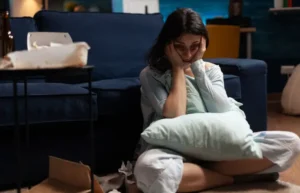 There’s a moment every year when summer slips away quietly. The air turns colder, the light changes, and something inside shifts too. For many people, it’s not just nostalgia — it’s a real emotional weight. Mornings feel slower, motivation fades, and even simple things feel harder. That’s not laziness or moodiness. It’s a signal from the body and mind reacting to change.
There’s a moment every year when summer slips away quietly. The air turns colder, the light changes, and something inside shifts too. For many people, it’s not just nostalgia — it’s a real emotional weight. Mornings feel slower, motivation fades, and even simple things feel harder. That’s not laziness or moodiness. It’s a signal from the body and mind reacting to change.
This is what doctors call seasonal affective disorder — but most people simply call it the autumn blues.
When the Seasons Change, So Does the Brain
Our bodies are built to respond to light. When daylight shortens, the brain produces more melatonin — the hormone that makes you sleepy — and less serotonin, which keeps you balanced and alert. The result? You feel heavy even when you’re well-rested.
It’s not in your head; it’s in your chemistry. The shift in light affects your mood, sleep, and energy, often without any clear reason. You start saying things like “I just don’t feel like myself,” but can’t explain why. That quiet disconnection is exactly what autumn depression feels like — subtle, familiar, and real.
The Emotional Side of the Season
Autumn looks beautiful from the outside — gold leaves, soft sweaters, candles, comfort. But for many, that beauty feels distant. The world slows down while the mind stays restless.
The brain starts craving warmth — not just physical, but emotional. You might notice yourself withdrawing, sleeping more, losing interest in things that used to bring joy. Even small tasks, like returning messages or going outside, start to feel like effort.
The good news? This doesn’t mean something is broken. It means your system is trying to adapt to a slower rhythm. You just have to help it get there.
What the Body Feels When the Mind Is Low
Depression isn’t only emotional — it’s physical too. Muscles tighten. The body feels heavier. Appetite changes. For some, it’s fatigue; for others, anxiety. This overlap between mental and physical states is why holistic care works best.
When the body moves, the mind follows. Light exposure, nutrition, gentle exercise, and deep rest all signal safety to your nervous system. When those signals are consistent, balance returns.
That’s the approach clinics like Bethesda Revive take — combining emotional support with body-based therapies that restore both energy and calm. Because treating only the symptoms of mood misses half the story.
The Power of Light and Rhythm
One of the simplest yet most powerful tools against autumn depression is light. Morning sunlight tells the brain it’s time to wake up. Even ten minutes outside can make a difference. If you live somewhere gray, light therapy lamps mimic natural brightness and help regulate mood hormones.
Equally important is rhythm. Autumn depression thrives on chaos — irregular sleep, skipped meals, long nights indoors. When you give your days a predictable shape — waking, moving, eating, resting — your body starts to stabilize. Routine doesn’t make life boring; it gives your brain a map back to balance.
Emotional Nutrition
Just as the body needs vitamins, the mind needs connection. Isolation feeds depression. Even quiet companionship — coffee with a friend, a walk with someone who listens — resets emotional chemistry.
Sometimes, though, talking to loved ones isn’t enough. They care, but they can’t always guide you through the fog. That’s where professional help makes a real difference. Therapy gives structure to the chaos in your head. It helps you name what’s happening and stop blaming yourself for it.
There’s strength in admitting you need warmth — not just from blankets, but from people.
The Gentle Way Back
Healing from seasonal depression isn’t about forcing happiness. It’s about giving yourself permission to slow down without falling apart. The goal isn’t endless energy — it’s steadiness. You don’t need to “snap out of it”; you need to listen to what the season is asking for.
That might mean more rest, more light, or a small act of care — walking outside, journaling, talking, seeking help. Change doesn’t come in a rush; it comes quietly, the same way the leaves turn back to green in spring.
Picture Credit: Freepik
